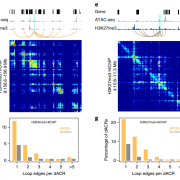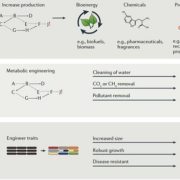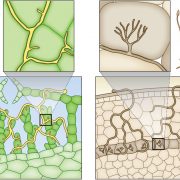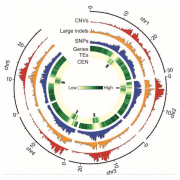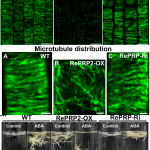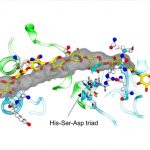Review: Evo-physio: on stress responses and the earliest land plants (J. Exp. Bot.)
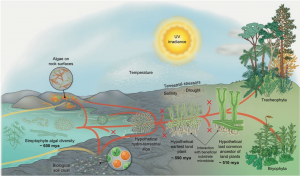 Streptophytes are a grade of mostly freshwater algae that transitioned into land, a singularity that in turn gave rise to all present terrestrial flora. This passage along the hydrological gradient that culminated in land habitation required key adaptations to overcome previously unencountered terrestrial stressors such as UV radiation, and hydric and temperature stress. In this review, Fürst-Jansen et al. highlight probable core traits and networks that allowed the early land plants to thrive and survive. The authors note that many streptophyte algae possess traits and signaling networks previously thought to be land plant-specific (e.g., rhizoids, hormonal response to biotic and abiotic cues, auxin signaling) and call attention to the fact that many of the genes required for these processes were present in early land plants, even if they didn’t act in precisely the same process. The fact that streptophytes were ready to overcome challenges is supported by the fact that most (>80%) of the land plant repertoire of transcriptional regulators is present in streptophytes, with many of their stress response and developmental regulators probably being co-opted to perform other functions in other land plant lineages due to the moldability of their genetic frameworks. This study summarizes core signaling networks to infer the “terrestrialization toolkit” that made the singularity of plant colonization possible. (Summary by Jesus Leon @jesussaur). J. Exp. Bot. 10.1093/jxb/eraa007
Streptophytes are a grade of mostly freshwater algae that transitioned into land, a singularity that in turn gave rise to all present terrestrial flora. This passage along the hydrological gradient that culminated in land habitation required key adaptations to overcome previously unencountered terrestrial stressors such as UV radiation, and hydric and temperature stress. In this review, Fürst-Jansen et al. highlight probable core traits and networks that allowed the early land plants to thrive and survive. The authors note that many streptophyte algae possess traits and signaling networks previously thought to be land plant-specific (e.g., rhizoids, hormonal response to biotic and abiotic cues, auxin signaling) and call attention to the fact that many of the genes required for these processes were present in early land plants, even if they didn’t act in precisely the same process. The fact that streptophytes were ready to overcome challenges is supported by the fact that most (>80%) of the land plant repertoire of transcriptional regulators is present in streptophytes, with many of their stress response and developmental regulators probably being co-opted to perform other functions in other land plant lineages due to the moldability of their genetic frameworks. This study summarizes core signaling networks to infer the “terrestrialization toolkit” that made the singularity of plant colonization possible. (Summary by Jesus Leon @jesussaur). J. Exp. Bot. 10.1093/jxb/eraa007



